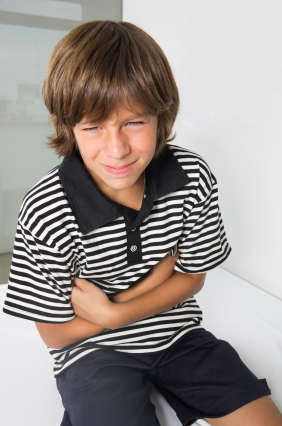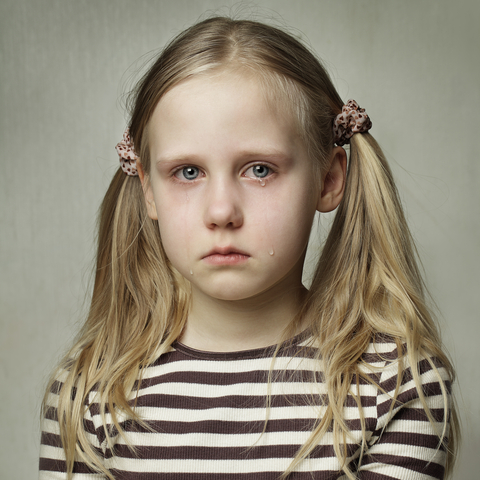by Dr. Craig A. Maxwell
“Are you abusing your child?” As a parent, hearing a doctor ask this question can be heart-stopping. While child abuse is often under-diagnosed, many innocent parents are wrongly accused of child abuse because their little one has a condition that mimics its most common signs.
Most Common Medical Conditions Mistaken for Child Abuse
When your child is sick or exhibiting unusual symptoms, you take them to your pediatrician for an evaluation. If the symptoms are severe enough, you rush them to the emergency room as any concerned parent would. You hope and expect prompt medical care and support but instead, you’re met with looks of suspicion.
If you or someone you know is experiencing this, do some research into these common disorders often mistaken for the symptoms of child abuse:
1. Bleeding Disorders
Bleeding disorders such as hemophilia, ITP, anemia, and disseminated intravascular coagulation are often mistaken for the signs of child abuse. Each of these disorders can cause easy bruising that may spread over wide areas of the body. Since the signs and symptoms of a bleeding disorder versus child abuse are nearly identical, it is often difficult for even the highly-trained medical professional to differentiate.
Dr. Michael Laposata, a pathologist and blood-clotting expert at Vanderbilt University has been studying the abuse/bleeding disorder connection since 2005. He states that the most common tests for bleeding disorders can miss multiple types, leading practitioners to believe the parents are lying and the child is, indeed, in danger at home.
Three routine tests (PT, PTT, and Platelet Count tests) only diagnose a handful of bleeding conditions, leaving the most common disorders undetected. This prompted him to create a tiered series of blood tests known as “Non-Accidental Injury Coagulation Panel,” which identifies underlying disorders that are more common in children. The panel can be performed with a small amount of blood, which is essential for infant patients.
The panel is expected to be introduced soon at Vanderbilt.
2. Bone Disorders
It’s normal for many children to break a bone or two during their formative years, especially if the child is very active or accident-prone. However, when a baby or young toddler presents with broken bones, the diagnosis is almost always child abuse. Bone disorders such as osteogenesis imperfecta, rickets, and osteopenia are common causes of brittle and easily-breakable bones. A child who continually presents with unexplained fractures should be immediately evaluated for brittle bone disease and the nutritional deficiencies that may cause them (vitamin D3, calcium, and magnesium deficiency).
3. Hyperthyroidism
Hyperthyroidism can also be mistaken for child abuse because of its symptoms. For example, a child with autoimmune Grave’s disease may experience a “failure to thrive,” which is a variation in normal growth progression. Children with hyperthyroidism may be unusually thin, which may be mistaken for intentional starvation. Hyperthyroidism can also contribute to insomnia, anxiety, nervousness, and irritability, which could be mistaken for symptoms of an experience of mental trauma.
Thyroid disease can be notoriously difficult to diagnose as many conventional tests done for this disorder produce false negatives. I’ve had multiple patients come into my office believing they don’t have a thyroid problem only to find out the truth once they took The Complete Thyroid Panel + Thyroid Antibodies from Direct Labs.
4. Vitamin Deficiencies
In the 21st century, vitamin deficiencies have become an epidemic due to poor diet, excessive consumption of antibiotics, and chronic digestive disorders. During pregnancy, if the mother has an autoimmune disease, has her own nutritional deficiencies, or is using certain medications (especially those for mental health or acid reflux disease), her children may be born with severe nutrient deficiencies.
Two of the most common vitamin deficiencies often mistaken for child abuse are vitamin K1 deficiency and vitamin D3 deficiency. With a deficiency in vitamin K1, blood-clotting ability is affected, which may cause unexplained bruises and easy bleeding. Vitamin D3 deficiency can result in rickets, which may result in bones that are easily broken. It is estimated that twins have a 25% higher incident of this common nutrient deficiency.
The most accurate blood panel I have found to detect vitamin D3 deficiency is the Vitamin D, 25 Hydroxy Test Kit. You can order it online and take it to a LabCorp in your area for a blood draw. Your results will be mailed to both you and the doctor of your choice within 5-7 business days.
5. Gluten Intolerance
 Gluten intolerance, or autoimmune celiac disease, may cause certain symptoms indicative of child abuse. Celiac disease is an autoimmune condition whereby the immune system produces antibodies to the protein found in wheat, barley, and rye (called gluten). A child with this condition may exhibit a failure to thrive, be excessively thin, and have a type of rash called dermatitis herpetiformis, which may be mistaken for cuts, burns or a rash related to sexual abuse. Furthermore, a child with this condition may develop anal fissures, which may be also misinterpreted as a sign of sexual abuse.
Gluten intolerance, or autoimmune celiac disease, may cause certain symptoms indicative of child abuse. Celiac disease is an autoimmune condition whereby the immune system produces antibodies to the protein found in wheat, barley, and rye (called gluten). A child with this condition may exhibit a failure to thrive, be excessively thin, and have a type of rash called dermatitis herpetiformis, which may be mistaken for cuts, burns or a rash related to sexual abuse. Furthermore, a child with this condition may develop anal fissures, which may be also misinterpreted as a sign of sexual abuse.
6. Birth Marks
Birth marks that look like bruises or burns are often mistaken for child abuse to the untrained eye. For example, Mongolian blue spots, a type of congenital birth mark, can cause multiple spots of blue-gray patches that cover the lower back, buttocks, sides, and shoulders. Port wine stains are large red patches that cover the skin and may be mistaken as an intentional burn.
7. Skin Conditions
Autoimmune and allergic skin conditions such as eczema, psoriasis, dermatitis, and solar urticaria (a type of allergic reaction to the sun) can be mistaken for abuse at first because of their tendency to look like burns. Oftentimes, children with these types of skin conditions have one or more underlying food or environmental allergies.
8. Ehlers-Danlos Syndrome
Ehlers-Danlos syndrome is a rare connective tissue disorder characterized by velvety, stretchy skin, easy bruising, slow wound healing, flexible, easy-to-dislocate joints, frequent muscle cramps, and bone breaks. This condition can be difficult to diagnose as it mimics not only the symptoms of child abuse but multiple sclerosis, fibromyalgia, and rheumatoid arthritis.
For more information about this condition, visit EDNF.org.
9. Hair Tourniquet Syndrome
Hair tourniquet syndrome is one of the more unusual conditions that may be mistaken for child abuse. It’s exactly what it sounds like. A strand or hair or a thin fabric of fiber wraps around the finger or toe of your little one and cuts off her circulation. This can be easily missed if the child’s affected digit is hidden by a sock. Parents with long, thinning or easily-shedding hair or a pet with same may experience this rare phenomena.
10. Lichen Sclerosis
Lichen sclerosis is an autoimmune skin disorder that commonly affects the genital area of those aged 50 and above. However, it is estimated the 10-15% of children can suffer from this condition. Symptoms include excessive genital itching, bleeding, blistering, and skin that is whiter and thinner than what is considered normal. This condition is often mistaken for sexual abuse when it occurs in young children.
Resources for Those Falsely Accused of Child Abuse
If you are the parent or caregiver of a child that has a medical condition that has been mistaken for child abuse, visit the National Center for Reason and Justice and the Child Welfare Information Gateway. They have a good amount of information, advice, and resources to use in your fight to keep your family together.
Sources:
http://www.ncbi.nlm.nih.gov/pubmed/7561712
http://ajcp.ascpjournals.org/content/supplements/123/Suppl_1/S119.full.pdf
http://www.propublica.org/article/pioneering-a-way-to-distinguish-blood-disorders-from-child-abuse








